

Hi! I’m Kateryna!
I arrived in Osaka after landing at Kansai International Airport, and first thing I headed over to “Kuromon Ichiba” in downtown Osaka!
Kuromon Ichiba is a very Osaka-esque sightseeing location. As you’d expect of an ichiba (market), everything is priced cheaply, but the products sold are of such high quality that even the chefs of long-standing restaurants come by every day to procure ingredients.




Actually, there was something I wanted to try during my trip to Japan!
I wanted to try and compare local gourmet dishes from Osaka and Nagoya! My main goals were comparing the udon in Osaka, made with Osaka’s unique dashi (broth made by simmering kombu kelp and bonito flakes. It is used to add extra flavor and aroma to dishes, and it is a staple in Japanese cooking) to Nagoya’s famous “kishimen,” as well as the “kushikatsu” loved by Osakans with the “miso katsu” in Nagoya! I wanted to try different variations on these similar but unique local dishes!
I started off today by going to an udon restaurant. Udon is a dish you can find anywhere in Japan, but the eastern side of Japan, Tokyo included, tends to serve udon with dashi made with bonito flakes, resulting in a stronger flavor and aroma. The western side of Japan, where Osaka is located, uses kombu kelp in its dashi, resulting in a more delicate aroma and flavor. The broth also has a unique color, and Osakan udon tends to be lighter and look more refined than udon in Tokyo.


I went shopping for a while after having my udon, and after a while I got hungry again, so I stopped by a “kushikatsu” restaurant. Kushikatsu is a skewer-based dish, where ingredients like meat and vegetables are skewered, battered, and fried, then eaten with sauce. There are a lot of different kushikatsu restaurants in Osaka, and I even found areas where there were several shops selling it all lined up together. By the way, apparently there’s a rule in Osaka that you can only dip your kushikatsu in the communal sauce once!



For this first day, I stayed at a hotel in Namba. I was really looking forward to the Nagoya dishes from the following day!

If you purchased your KINTETSU RAIL PASS in advance online or via a travel agency in your home country, you can exchange it for the full ticket at the express ticketing area of stations that service the Kintetsu Railway.
Don’t forget your passport, since you need to show it when purchasing the KINTETSU RAIL PASS!

Travelling from Osaka-Namba Station to Kintetsu-Nagoya Station using the limited express “Urban Liner” takes about 2 hours and 10 minutes. It takes a bit longer than going from Shin-Osaka Station to Nagoya Station, but it’s super convenient not having to change lines! The extra limited express fee will still be charged when using the KINTETSU RAIL PASS, but the price still ends up being extremely reasonable!
For someone like me who likes to visit a lot of different areas without planning out a full itinerary, this pass works out much better than using the Shinkansen!



Nagoya is the third-largest city in Japan, behind Tokyo and Osaka. It’s located between Tokyo and Osaka. “Nagoya Castle” is an absolute must-see tourist attraction in the area! That was my first stop!
One of the iconic parts of Nagoya Castle are the “golden dolphins” that adorn the roof. It’s one of Japan’s three most famous castles, alongside Ehime Castle and Kumamoto Castle, and it was really beautiful!
By the way, the two iconic golden dolphins on the roof of Nagoya Castle are actually different sizes. The one on the north side is male and is about 2.57 meters long, while the one on the south side is female and is about 2.51 meters. However, the males have 194 scales, while the females have 236, so the female dolphins are supposed to be more beautiful! It’s really interesting finding all of these fine details about Japanese castles.


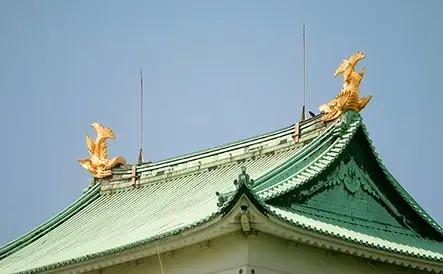
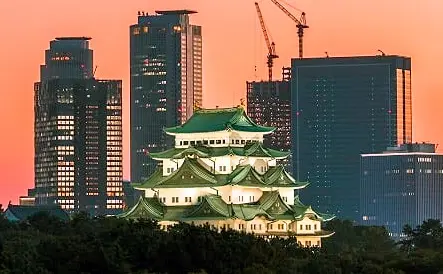
My next stop was “Nagoya TV Tower,” about a 20-minute walk from Nagoya Castle. Built in 1954, the tower is another one of Nagoya’s iconic landmarks, much like the castle. About 100 meters up the 180-meter-tall tower there is an observation deck, so you can look out across the cityscape.


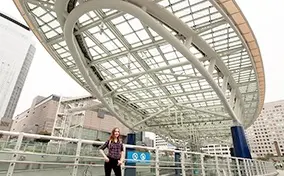
Alright, it’s time for me to enjoy these Nagoya dishes! First up is “kishimen”!
I was surprised that the texture of the noodles was so different than usual just because they were flat! The refined flavor of Osaka’s udon is amazing, but the kishimen here in Nagoya is delicious too! I probably have to call that matchup a draw!
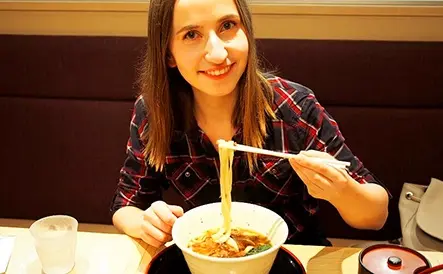
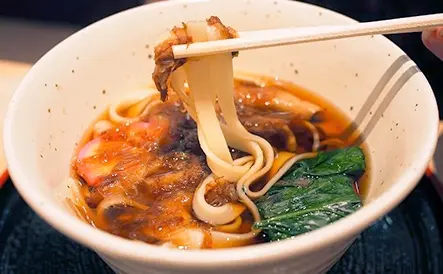
Next I ordered the “miso katsu”!
I’ve had tonkatsu many times, but the dish was transformed by the simple addition of the miso sauce! The rich, sweet sauce really got my appetite going.
Compared to the “kushikatsu” from Osaka, hmm… Another draw!
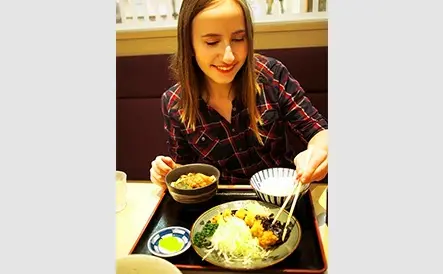
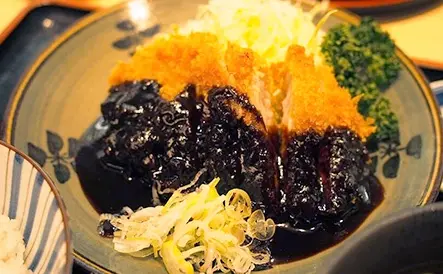
I managed to complete my goal of comparing Osaka and Nagoya’s local dishes! After this, I went back to Osaka, my home base for this trip. From there, I’ll be going to either Nara or Kyoto, whichever I feel like! I like leaving my options open!
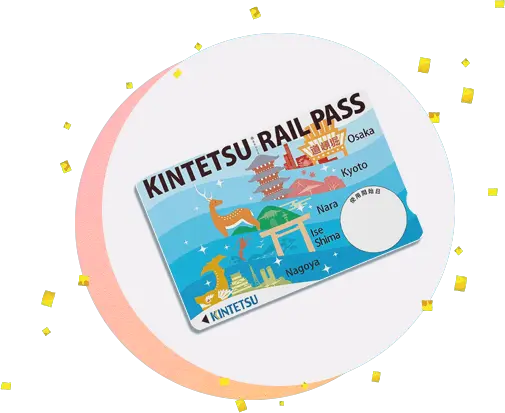
By the way, when I added up what my fare would have been without the KINTETSU RAIL PASS, going from Osaka (Osaka-Namba Station) to Nagoya (Kintetsu-Nagoya Station) came out to 4,720 yen (excluding limited express tickets).
The KINTETSU RAIL PASS is 3,600 yen, so it was a great deal! I only used it for one day here, but I could still be using it for another four days; the more you use it, the more value you get out of it! Additionally, it was very convenient that I didn’t have to buy a ticket every time I wanted to get on the train.
About KINTETSU RAIL PASS